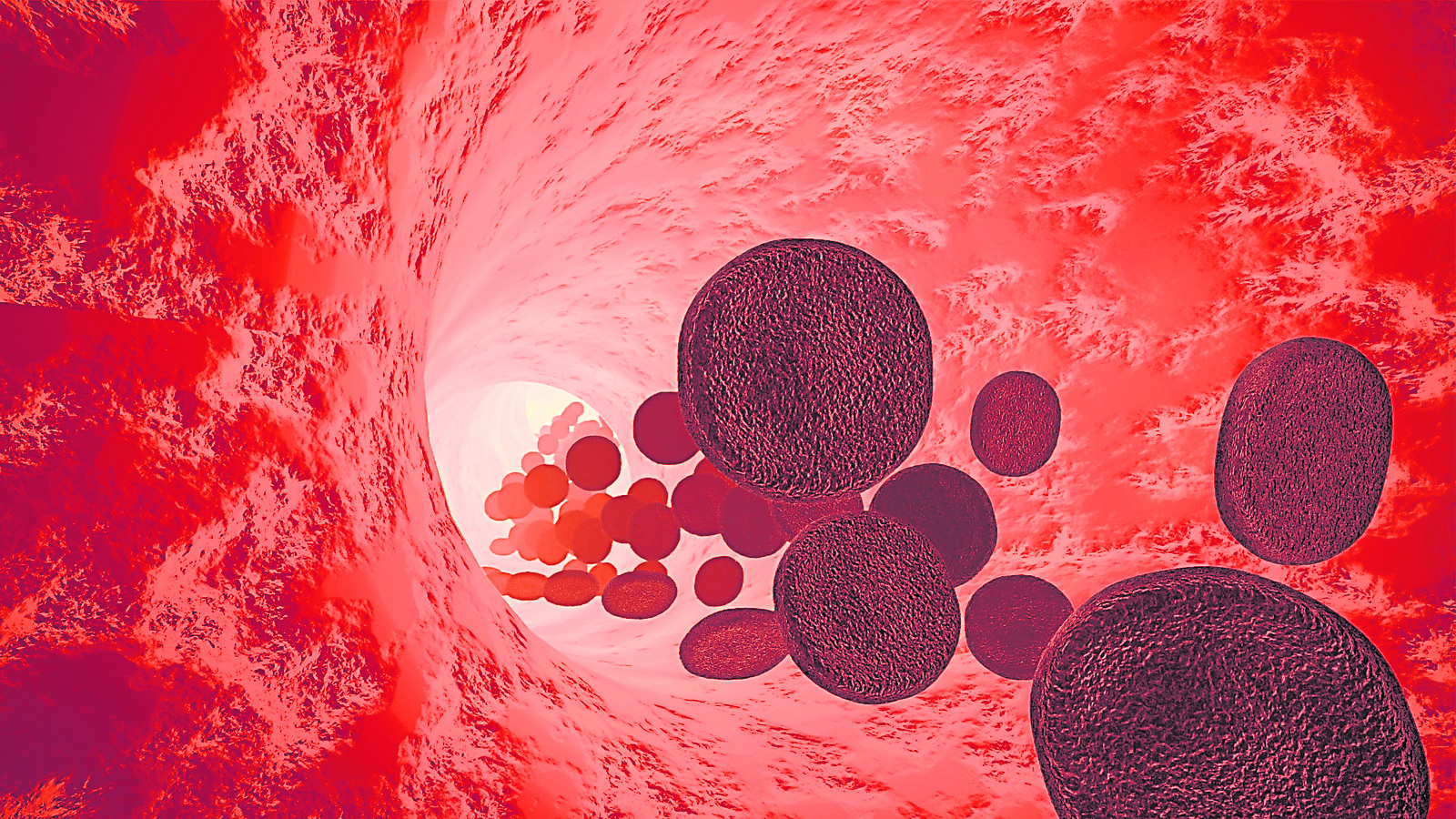[Local medical care]The later you give birth, the more genetic mutations you want to be a parent as early as possible
[ad_1]
Text: Bao Suhan Organizer: Liang Yingxiu
Hereditary bleeding disorder is an autosomal dominant genetic disorder. Studies have shown that the sperm of most men over 40 or older are prone to spontaneous X-chromosome mutations and increase the chances of having a female hemophilia carrier.
In other words, not women should marry and have children at the right age, but men should also give birth as early as possible to reduce the chance of genetic mutations or having children with hemophilia.
(Kuala Lumpur News) Hereditary bleeding disorder is a genetic defect that causes patients to have a higher risk of bleeding than ordinary people.
This disease is further divided into two types: coagulation disorder and platelet disorder. The former refers to abnormal coagulation in the patient’s body, while the latter refers to platelet deficiency or function loss.
The disease is also divided into autosomal (autosomal) and X-linked (X-linked) inheritance patterns, both of which are dominant or recessive.
Dr. Vena
(Dr Veena Selvaratnam)
Inherited hemophilia risk higher than women
Dr Veena Selvaratnam, Consultant of the Department of Hematology at Ampang Hospital in Selangor, pointed out that autosomal dominant inheritance is irrespective of men and women, as long as one of the sex chromosomes is missing, it will be inherited, while recessive inheritance refers to a pair (two bar) Chromosomal deletion occurred simultaneously. Both males and females have the same genetic risk.
“Another type of X-linked dominant inheritance means that no matter whether the X chromosome is missing in men or women, it will be inherited, while recessive inheritance means that both X chromosomes are defective. Treated as X-linked recessive. This inheritance usually affects more males than females.”
There are different types of blood clotting defects, the most common of which are haemophilia,
Hemophilia or Von Willebrand Disease (VWD).
Hemophilia A is deficient in coagulation factor VIII,
And hemophilia B is the lack of coagulation factor IX.
VWD is the lack of Wen Weber factor and is closely related to hemophilia A,
That is to say, patients who lack Wen Weber factor also have the phenomenon of lacking coagulation factor VIII.
It’s difficult to tell the difference between mild hemophilia and VWD if patients are only tested for factor VIII, she said.
“Hemophilia is an X-linked dominant or recessive inheritance, which means that men have a higher risk of inheriting hemophilia than women, while VWD is an autosomal dominant or recessive inheritance, which means that men and women have the same genetic risk. In fact, blood clotting defects Coagulation factors I to XIII can occur, but coagulation factors VIII, IX, and VWD are more frequently deficient, and rare coagulation factor deficiencies are mostly autosomal recessive inheritance.”
She pointed out that there are more types of platelet defects, among which Glanzmann Thrombasthenia and Bernard–Soulier are more common. Other types such as congenital immune platelet deficiency (congenital ITP) are quite rare.
How do I know if I have a genetic bleeding disorder?
She revealed that it can usually be found in symptoms such as bleeding gums, rashes or purple spots, bruising, joint hematomas or hematomas with internal bleeding, brain hemorrhages, etc.
“Both men and women can inherit bleeding disorders, but women are more special than men, mainly because women have menstrual periods every month, and women patients will face the problem of menorrhagia, which can be excessive menstrual blood or longer menstrual periods , some patients have menstrual periods as long as 7 to 9 days.”
Bleeding disorders cause female infertility
Female patients may face the problem of menorrhagia at the beginning of menstruation, but they are not aware of it and have no way to compare it. Therefore, patients can self-assess or identify by the symptoms of menorrhagia.
“The first way is through the tampon or tampon test, if you need to change your tampon or tampon every hour of your period due to heavy menstrual bleeding, this indicates heavy or unusual periods. Other symptoms include the need to use two at the same time during your period. Leak-proof sanitary napkins, frequent replacement of sanitary napkins at night, menstrual period of more than 1 week, menstrual blood clots and the amount is more than a quarter of the palm.”
“Patients also have symptoms of fatigue and shortness of breath, which is a symptom of anemia, indicating that the hemoglobin (Hb) in the body is declining. If menstruation seriously affects life routines, such as being unable to perform daily activities, it is also a symptom for patients. bothered.”
She said that pelvic hematoma (pelvic hematoma) and endometriosis (endometriosis) belong to ovulation bleeding, and the blood of endometrium hemorrhage cannot be discharged from the body like menstrual blood, and it will accumulate in the body to form hematoma or chocolate cyst.
“Endometriosis, a bleeding disorder that is increasingly common, can cause pelvic pain, dyspareunia, premenstrual spotting problems. Other bleeding disorders include painful bowel contractions and bloating, bowel habits Changes, symptoms similar to or more severe than Irritable Bowel Syndrome (IBS). Sometimes, bleeding disorders can also cause infertility in women.”
Other symptoms of bleeding disorders, such as occasional blood in the stool or pain during menstrual defecation, urinary system symptoms such as pain during urination, frequent urination or blood in the urine, pain in the chest, shoulders and abdominal wall during menstruation, etc. If these symptoms appear, it means that there is an abnormal phenomenon in the body. Further testing is necessary to find out the cause.


Anemia means low hemoglobin
Pregnancy needs to understand the risks first
Anemia is common in patients with hereditary bleeding disorders, which means low hemoglobin in the body. Generally, the normal hemoglobin value of women is between 11.5 and 15g/dL. A lower than normal value means anemia.
Anemia means a lack of red blood cells in the body. Red blood cells are responsible for carrying oxygen throughout the body and making us feel energized. Conversely, people with anemia feel tired and listless. Other symptoms include pallor, difficulty concentrating, shortness of breath, palpitations, chest pain and numbness .
Alternatives need to be prepared for the patient
Women with hereditary bleeding disorders need prenatal counseling to clearly understand the risks, because both mother and child face the risk of bleeding during childbirth. The patient itself has this risk, and the baby is at risk because of hereditary disease. Therefore, no matter before pregnancy or childbirth, patients need to consult their doctors, so that doctors can prepare early.
It is necessary for doctors to prepare alternative plans for patients who are about to give birth or postpartum to avoid massive blood loss. Patients with abnormal platelet function should be paid more attention to.
Injection of pain relievers during labor is not recommended
Wei Na also does not recommend the use of spinal analgesics or epidural anesthesia during childbirth, because this greatly increases the risk of bleeding and endangers the mother and baby.
Patients may need tranexamic acid (tranexamic acid) to help stop bleeding after delivery. Because some patients bleed only a few days after delivery, doctors still need to continue to monitor patients after delivery.
Case Studies
Khoo Mui Ping
(45 years old, hemophiliac)
Blood coagulant every 10 days
Coexist with the disease and face it optimistically
Because of the lack of blood coagulation function in the body, I basically spent my childhood in the hospital, such as tooth extraction, nosebleeds, and even menstruation, I had to be admitted to the hospital for blood transfusion, because the body has no blood coagulation function. “
ever bruising joint bleeding
Once admitted to the hospital, the shortest is two weeks, and the longest can be 1 to 3 months. She also suffered from frequent bruising and joint bleeding due to the disease. Her appearance does not make people feel like a patient. I believe this is because of her natural optimism and positive attitude towards the disease. Every time symptoms occur, she will deal with and overcome them according to the methods taught by the doctor.
Currently, she needs blood clotting injections every 10 days to help the body stop bleeding and control symptoms such as bruising and joint bleeding, she said.
need to be happy
“The only thing I can do now is to coexist with this disease. Only by coexisting can I live in peace. Moreover, it is not a terminal illness. As long as I maintain a happy mood, many of the symptoms I face can be overcome.

Women are carriers of hemophilia
Question 1. Among male and female patients, who has a higher risk of inheriting hemophilia to the next generation? Does it depend on the condition or stage?
Answer 1. The inheritance of hemophilia does not say which gender is more genetically risky. Hemophilia is a recessive inheritance of the X chromosome. Women are usually carriers of hemophilia. If one of the abnormal X chromosomes is passed on to a son (XY), the son will be a hemophiliac.
At the same time, every time a woman conceives a boy, the chance of passing on the abnormal chromosome to her son is 50%. If a hemophilia carrier gives birth to a daughter, the daughter will inherit an abnormal X chromosome and become a hemophilia carrier.
The genetic risk of hemophilia has nothing to do with the severity or mildness of the disease. It does not mean that patients with mild hemophilia have a lower chance of inheriting the disease to their children, but it depends on whether the child is inherited with an abnormal X chromosome. However, if the patient or carrier has mild hemophilia, the mild hemophilia will be passed on to the child.
30% of patients have no family history
Question 2. Hemophilia is a genetic disease. Is it possible for people with no family history of hemophilia to suffer from this disease?
Answer 2. X chromosome abnormality does not necessarily occur in genetics, it can also be a spontaneous X chromosome mutation, causing people without family history to suffer from hemophilia. Usually spontaneous X chromosome mutations occur in the father’s sperm, and the mother naturally becomes an “obligate carrier”, and the child born to the two becomes a hemophiliac. About 30% of hemophilia patients have no family history of the disease, on the contrary, the vast majority of VWD patients are familial.
[ad_2]
Source link

![[Love Wants Sexual Happiness Series 358]Find the culprit and overcome psychogenic erectile dysfunction. Don’t let pressure affect your sexual happiness.](https://chinathenews.com/wp-content/uploads/2024/04/171111-780x420.jpg)

![[Wanqingyi Care]My health, my rights, customized medical methods in the last stage of life](https://chinathenews.com/wp-content/uploads/2024/04/ZZ1-100-780x420.jpg)
![[Kidney Transplantation Special Topic]The survival rate of transplanted kidneys is high without dialysis treatment three times a week](https://chinathenews.com/wp-content/uploads/2024/04/1311-780x420.jpg)



